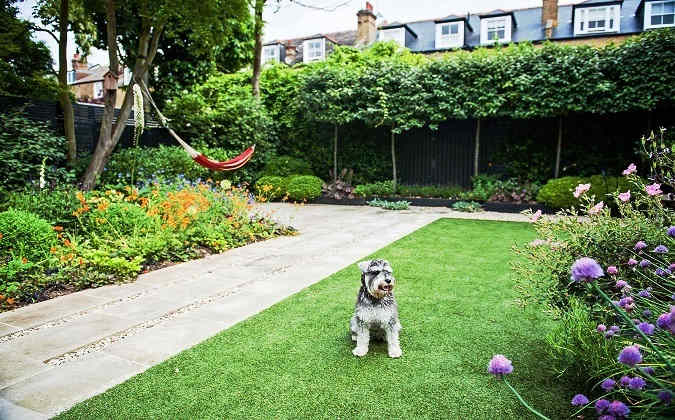When it comes to designing a landscaping project with landscapers, there are many factors that need to be taken into account. There is the size of the property, the budget which is available for the project, and the preferences of the person for whom the landscape design is being created, so communicating these to your landscape arcitect is of the foremost importance. There is another factor, which might not apply in all designs, but for those that it does applies to it is crucial, and that is when the design needs to take into account that the garden is going to be used by a pet.
In most cases, this is going to be either a dog or cat, although many gardens also have rabbits, guinea pigs, and even pet lizards who might share them with their owners. Regardless of which type of pet you have, whether you are designing the landscaped garden yourself, or are employing someone else to do so, that design needs to be pet-friendly. Thankfully, there are ways that can be achieved, and here are some of the simplest to follow when designing your landscaped garden.
Speak You Your Vet First
Before you so much as start measuring your garden with regards to designing it, the first port of call should be to speak to your vet. They may not be a gardener in their spare time, but in their professional capacity they will have experience of what dangers can occur within gardens for pets.
Explain to them that you are planning to create a newly designed landscape garden and want to make sure that it is as safe as possible for your pet. In doing so your vet will be able to alert you as to what constitutes a risk to your pet, given their knowledge of each animal.
Choose Your Plants Carefully
Mother Nature seems to have created a scenario where the animal kingdom and the plant kingdom get along throughout the globe, but it does not occur 100% of the time. There are certain plants that constitute a genuine risk to the health of certain animals, and that includes your pet. By that we mean there may either be a risk of poisoning should your pet eat a particular plant, or there might be a physical risk, such as those plants with thorns.
This is something else you will want to discuss with your vet to get their advice as to what plants you should avoid. In addition, there is a ton of information online that will relate to your pet’s species and what plants might be unsafe for them
Use Paving Instead Of Gravel Or Stones
For pets such as cats and dogs, you want to make your landscaped garden an environment where they walk around and be safe at all times. This is especially true in relation to their paws. For this reason, and if your budget allows, we recommend that your design utilises paving stones for walkways wherever possible rather than gravel and small stones.
The risks from gravel and small stones are that sharp edges can cause cuts, they can get lodged between the pads of your pet’s paws, and they can hide other sharp objects which have somehow been buried in them, such as broken glass.
Paving slabs eliminate all of those risks to your pet as there are no sharp edges, nothing to harm their pads, and anything sharp on their flat surface is easily seen and either avoided by your pet when it is walking along, or better still, removed when you see it.

